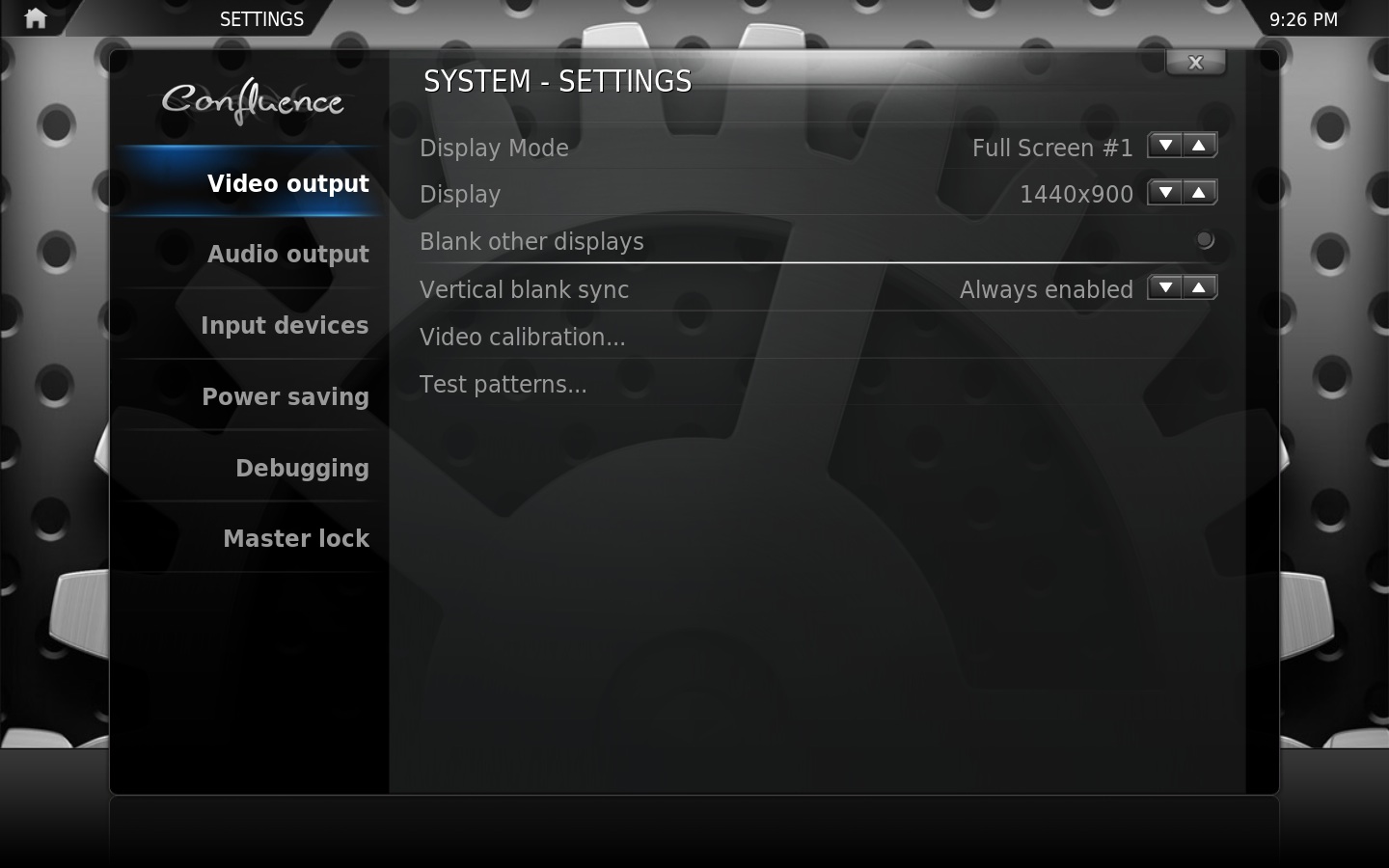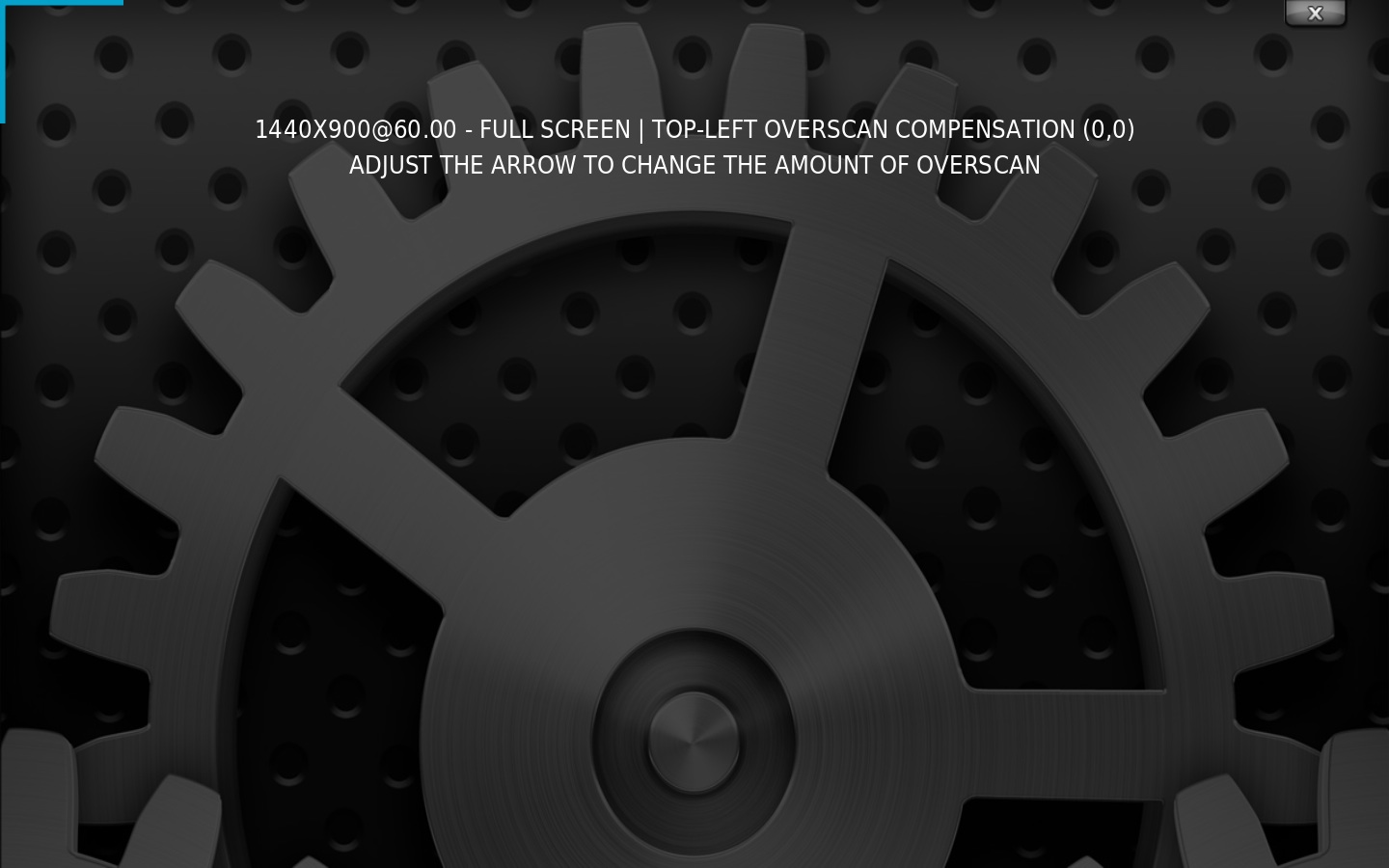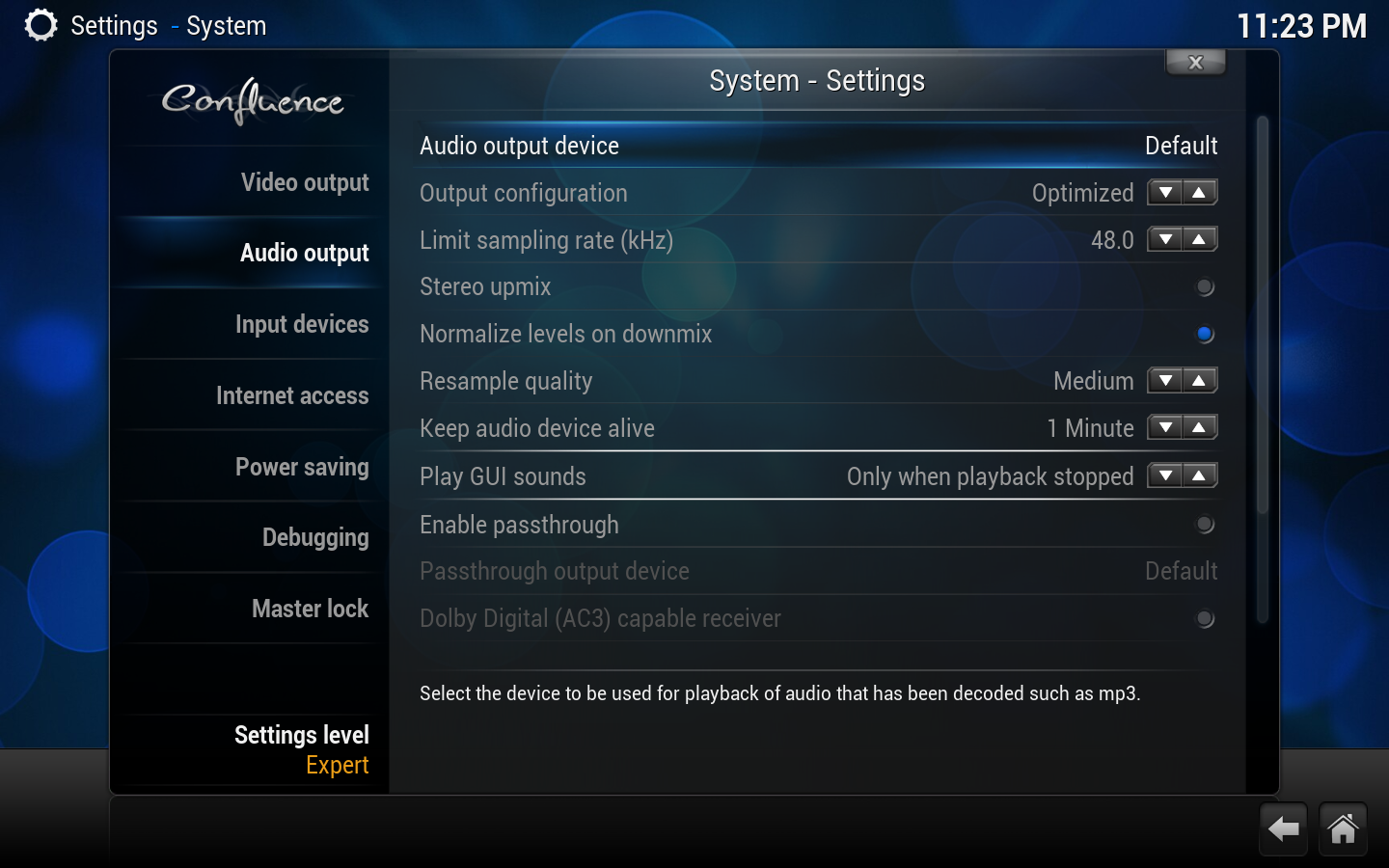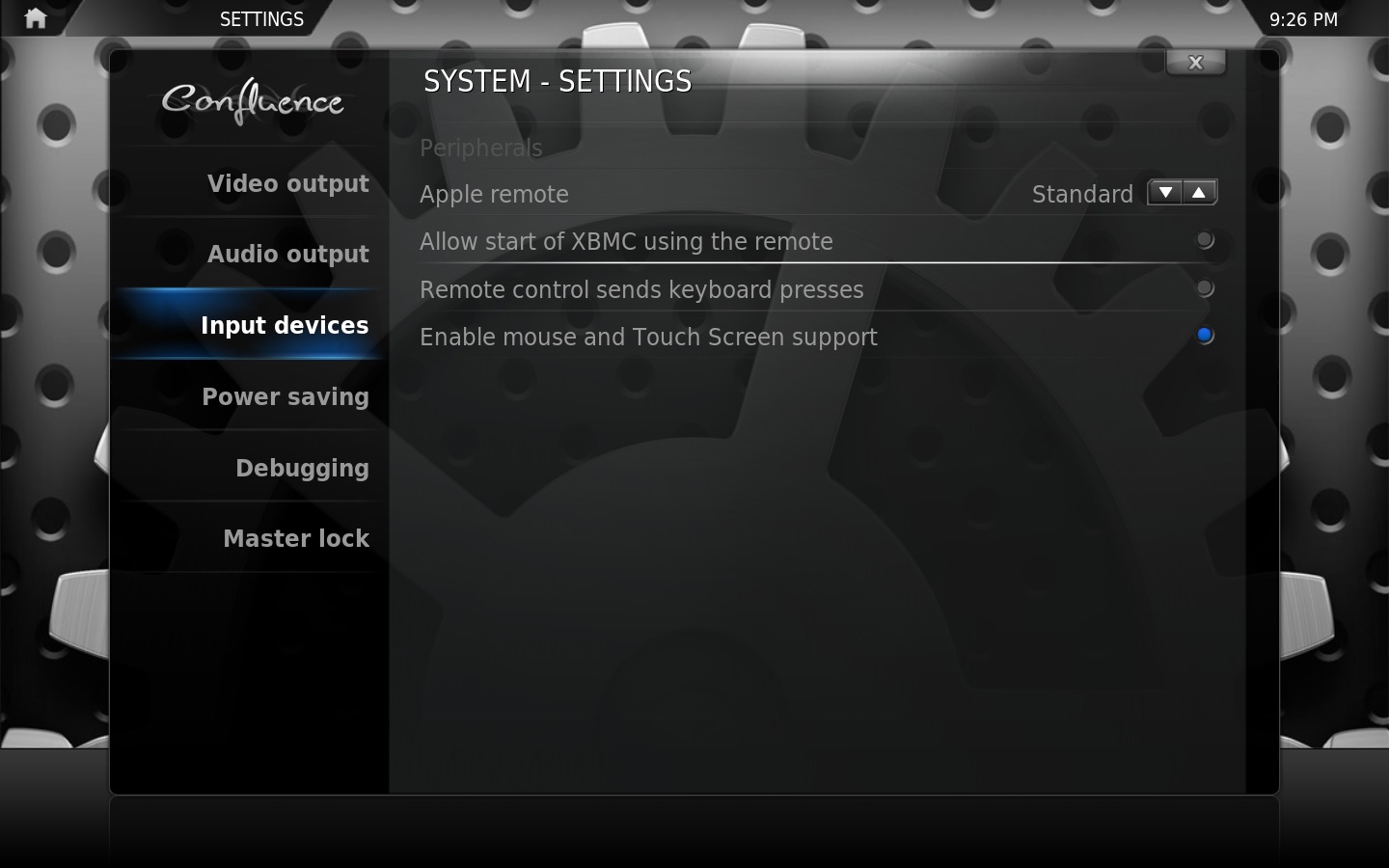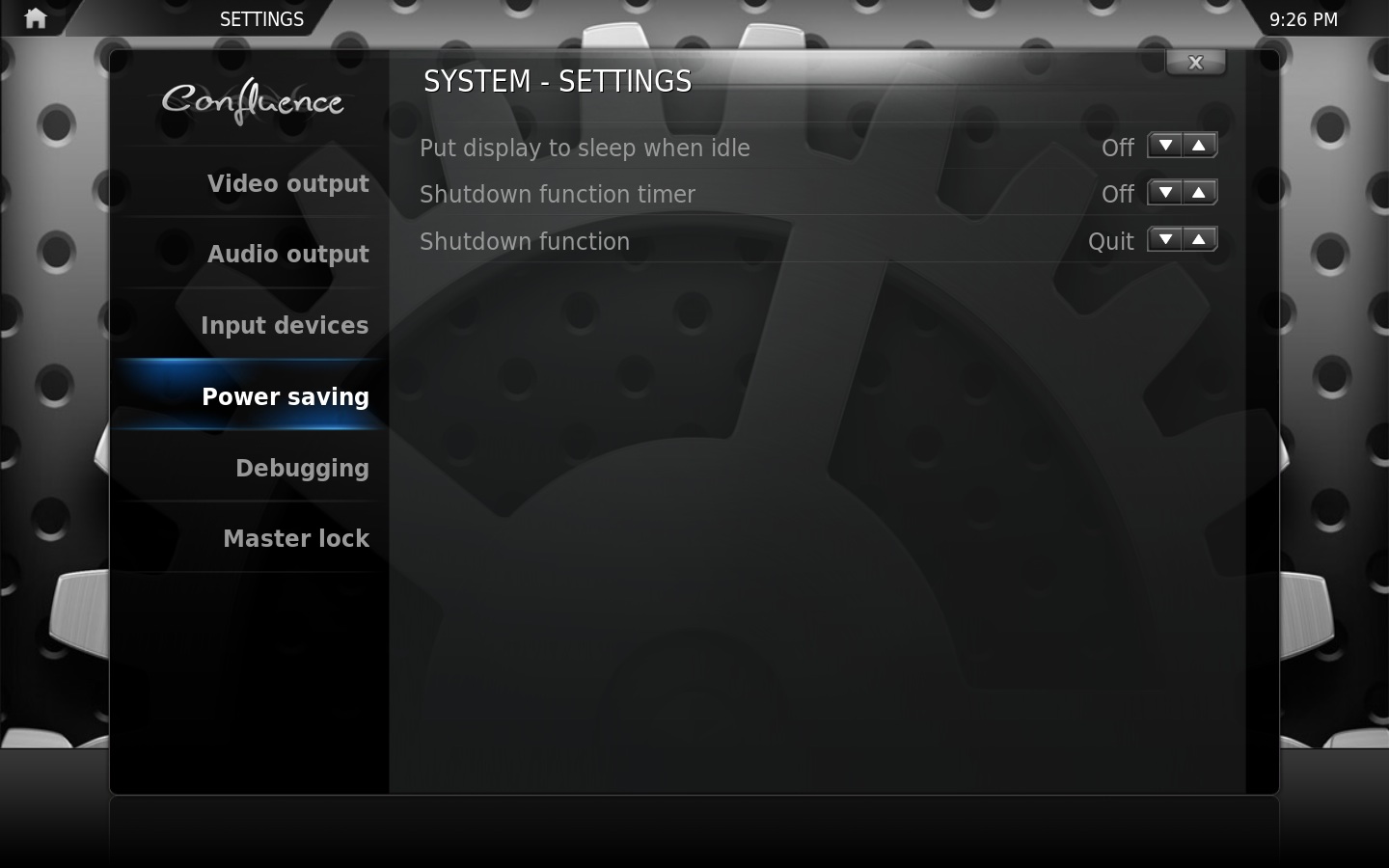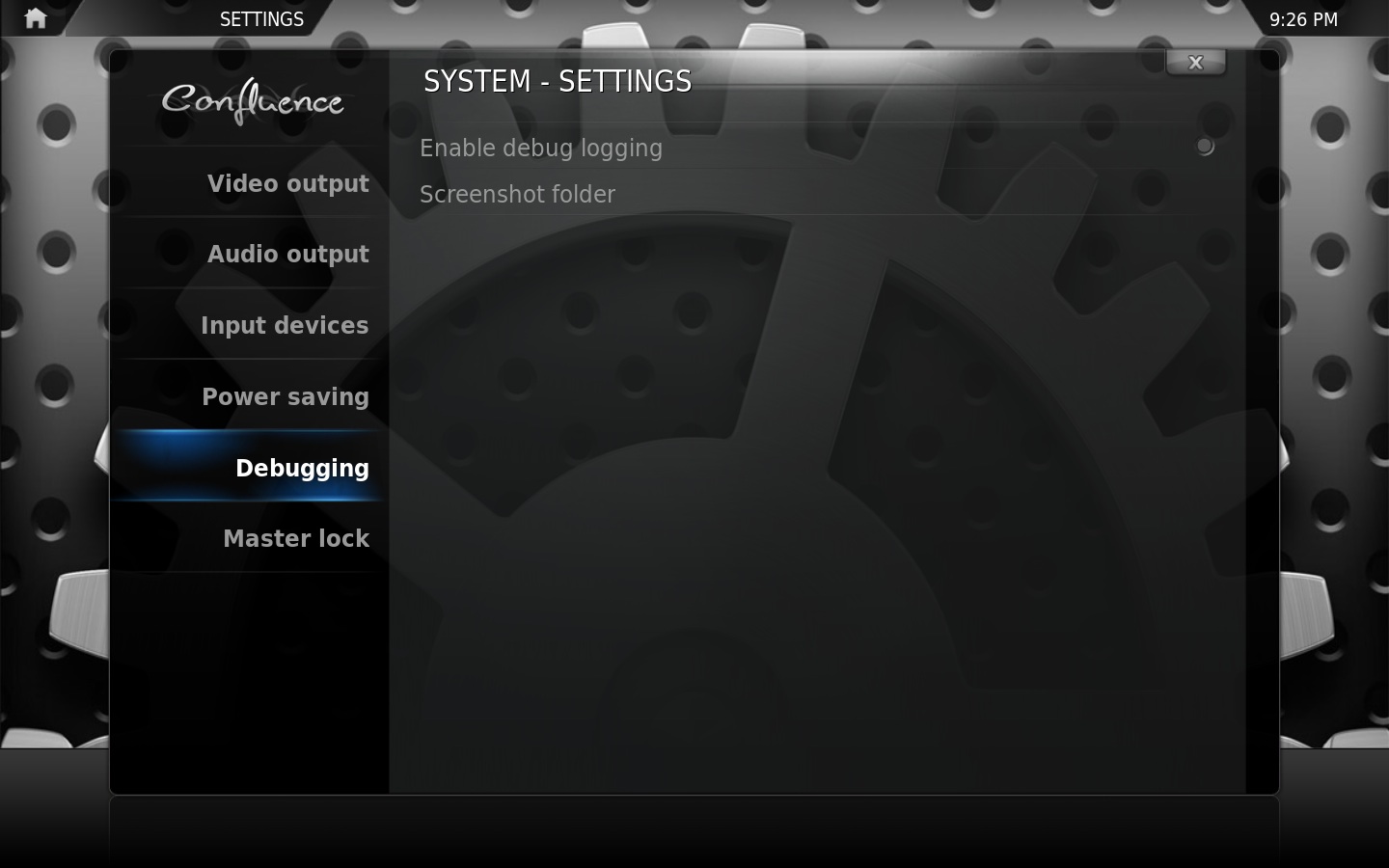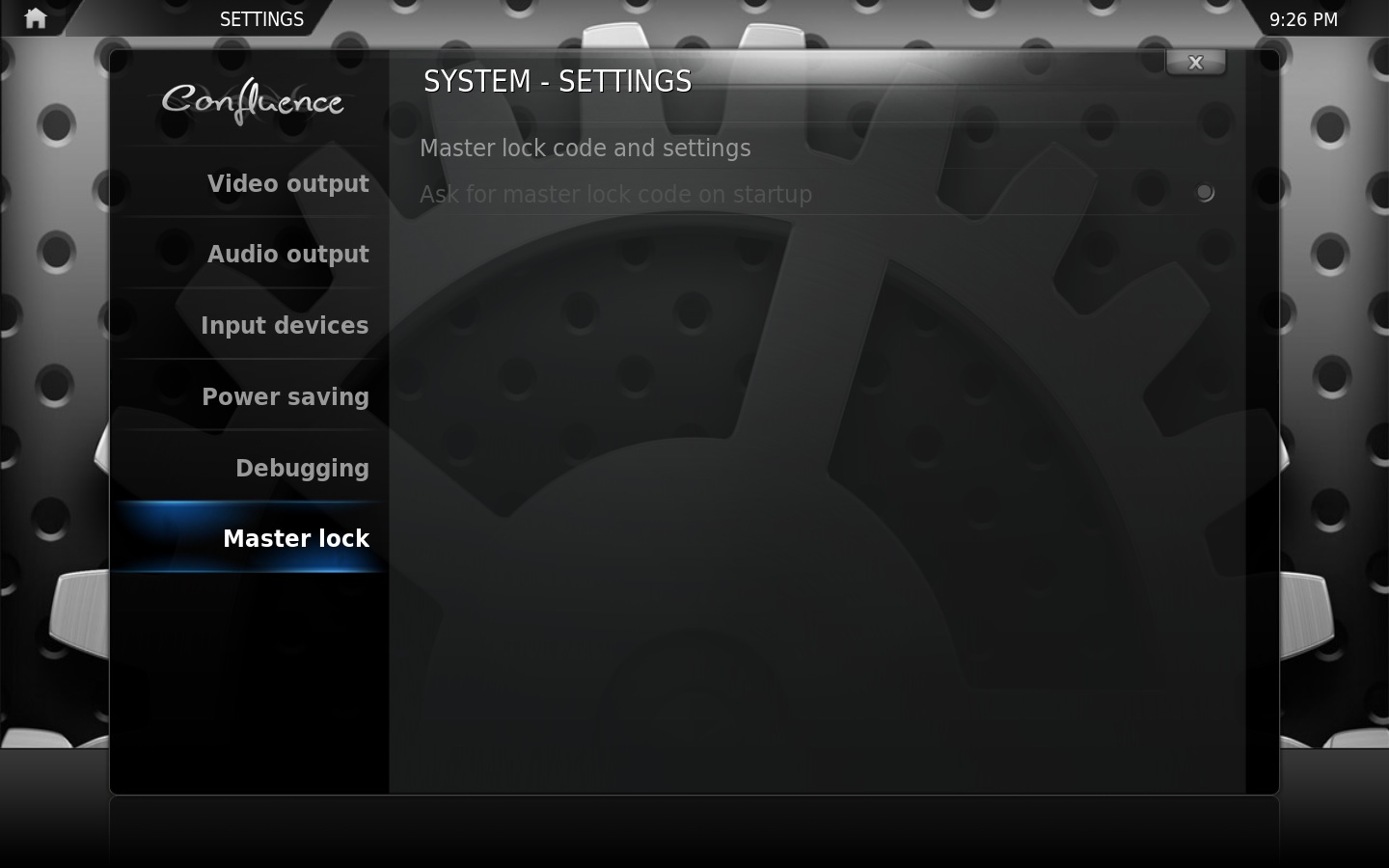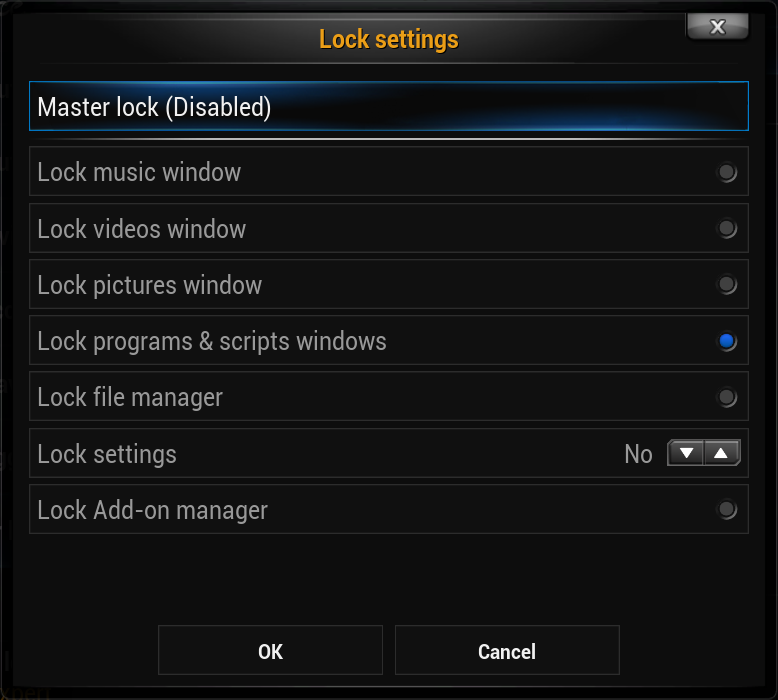Settings/System: Difference between revisions
>Jjd-uk |
>Jjd-uk |
||
| Line 42: | Line 42: | ||
==Audio output== | ==Audio output== | ||
[[File:Settings - Audio Output.png|500px|right]] | [[File:Settings - Audio Output.png|500px|right]] | ||
{{ | {{see also|AudioEngine/HOW-TO: Configure audio}} | ||
{| | {| | ||
| | | | ||
; Audio output | ; '''Audio output''' | ||
This allows you to tell XBMC about the type of connection to the audio equipment so it can set the available GUI options appropriately, in addition it tells XBMC the LPCM capabilities of the connection. | |||
; Speaker Configuration | {{Note|This unrelated with telling XBMC where the audio is actually sent, this is done via '''Audio output device''' and '''Passthrough output device''' settings.}} | ||
:'''- Analog:''' Disables all the "capable receiver" options for passthrough and allows multi-channel LPCM to be pass to a soundcard. | |||
; Boost volume level on downmix | :{{note| Analog in this case does not mean a D/A conversion is done by XBMC, this setting purely enables the hand-off of the LPCM data to allow either a on-board soundcard or off-board USB soundcard to do the actual D/A conversion before sending audio to speaker outputs.}} | ||
:'''- Optical/Coax:''' This enables the selection of the Dolby Digital and DTS capable receiver options and limits the output of LPCM to 2 channels. : | |||
; - Dolby Digital (AC3) capable receiver | :{{note|If you want to transcode one format to another, for example DTS is not supported on your receiver but AC3 is, then select just AC3 however as the DTS is decoded to LPCM before being encoded again to AC3 then the resulting audio will be AC3 2.0 only due to the LPCM 2.0 limit imposed by selecting Optical/Coax, if you want a full 5.1 channel transcode you'll have to select the HDMI option even if you're not using a HDMI output.}} | ||
: | :'''- HDMI:''' This enables all the capable receiver options, so in addition to what's available for Optical/Coax, TrueHD, DTS-HD and Multichannel LPCM capable receiver options are now selectable, in addition there is no limit on how LPCM is passed. | ||
; - | ; '''Speaker Configuration''' | ||
: | Select your physical speaker layout. | ||
{{note| If connected to a TV then don't set higher than 2.0 as it's not likely that it'll will be supported, only set higher if it's known for sure that channel configuration is supported e.g. 5.1}} | |||
; '''Boost volume level on downmix''' | |||
Boosts AC3 streams that have been downmixed to 2 channels | |||
; '''Output stereo to all speakers''' | |||
This upmixes 2 channel stereo sources to what specified by the Speaker Configuration so audio is output on all speakers | |||
---- | |||
; '''- Dolby Digital (AC3) capable receiver''' | |||
: Select this option if your receiver is capable of decoding AC3 streams. | |||
:{{note|AAC is transcoded to AC3 when this option is checked. (AC3 capable receiver is required.)}} | |||
; '''- DTS capable receiver''' | |||
: Select this option if your receiver is capable of decoding DTS streams. | |||
; '''- AAC capable receiver''' | |||
: Select this option if your receiver is capable of decoding AAC streams. | |||
:{{note|AAC receivers likely do not natively decode AAC in passthrough, likely shows up as LPCM. This is not a XBMC/AE limitation}} | |||
; '''- MultiChannel LPCM capable receiver''' | |||
: Select this option if your receiver is capable of decoding LPCM streams. | |||
---- | |||
; '''- TrueHD capable receiver''' | |||
: Select this option if your receiver is capable of decoding TrueHD streams. | |||
; '''- DTS-HD capable receiver''' | |||
: Select this option if your receiver is capable of decoding DTS-HD streams. | |||
---- | |||
; '''Audio output device''' | ; '''Audio output device''' | ||
This is the device you use to play LPCM or audio decoded by XBMC such as mp3's and FLAC. | |||
{{Note|If XBMC plays a file which has audio that the system does not support (thus the above capable receiver option is not selected e.g. DTS capable receiver is not selected) then it is either transcoded to a supported format or decoded and sent as LPCM, in both cases this will be the audio device used.}} | |||
; '''Passthrough output device''' | |||
This device you use to play the encoded formats, these are any of the formats checked above in the "capable receiver" options. | |||
---- | |||
; '''Play GUI sounds''' | |||
This sets how interface sounds are handled such as when navigating the menus, select from Never, Only when playback stopped, or Always. | |||
---- | |||
|} | |} | ||
{{-}} | {{-}} | ||
Revision as of 11:57, 6 February 2013
Video output
|
Video calibration...
This screen allows you to calibrate the User Interface by adjusting the overscan. Use this tool if the image being displayed is too large or small for your display. Note: Always adjust your hardware display settings before XBMC's settings (such as overscan, etc). Simply adjust the screen so that the arrows are in the top left and bottom right corners and that the entire frame is visible on screen.
It offers the ability to adjust
- The overscan of the video - How close to the edges of the screen that the image is displayed
- The positition where subtitles are displayed
- The position of the on screen display
- The pixel ratio - allows you calibrate the aspect ratio at which videos are played back
- Uicalibration2.jpg
Lower right corner
- Uicalibration3.jpg
Subtitles position
- Uicalibration.jpg
Aspect ratio
Audio output
This allows you to tell XBMC about the type of connection to the audio equipment so it can set the available GUI options appropriately, in addition it tells XBMC the LPCM capabilities of the connection. Note: This unrelated with telling XBMC where the audio is actually sent, this is done via Audio output device and Passthrough output device settings.
Select your physical speaker layout. Note: If connected to a TV then don't set higher than 2.0 as it's not likely that it'll will be supported, only set higher if it's known for sure that channel configuration is supported e.g. 5.1
Boosts AC3 streams that have been downmixed to 2 channels
This upmixes 2 channel stereo sources to what specified by the Speaker Configuration so audio is output on all speakers
This is the device you use to play LPCM or audio decoded by XBMC such as mp3's and FLAC. Note: If XBMC plays a file which has audio that the system does not support (thus the above capable receiver option is not selected e.g. DTS capable receiver is not selected) then it is either transcoded to a supported format or decoded and sent as LPCM, in both cases this will be the audio device used.
This device you use to play the encoded formats, these are any of the formats checked above in the "capable receiver" options.
This sets how interface sounds are handled such as when navigating the menus, select from Never, Only when playback stopped, or Always. |
Input devices
Note: The content of this screen largely depends on the input devices that XBMC detects
|
Power saving
|
XBMC also has a "Custom shutdown timer" selectable from the power icon on the home screen, or from the shutdown menu (press S on a keyboard).
Debugging
|
Master lock
Note: The Master Lock options are ONLY available while using the Default User profile.
XBMC will give you three tries when you need to enter a lock/password to access something that is locked. If you max out these three tries then just quit XBMC and re-open it to get three more tries. The Master Lock code is stored in the "profiles.xml" file in the userdata folder. Should you get locked out, you can delete or edit the "profiles.xml" file.
|
Master lock settings
|
